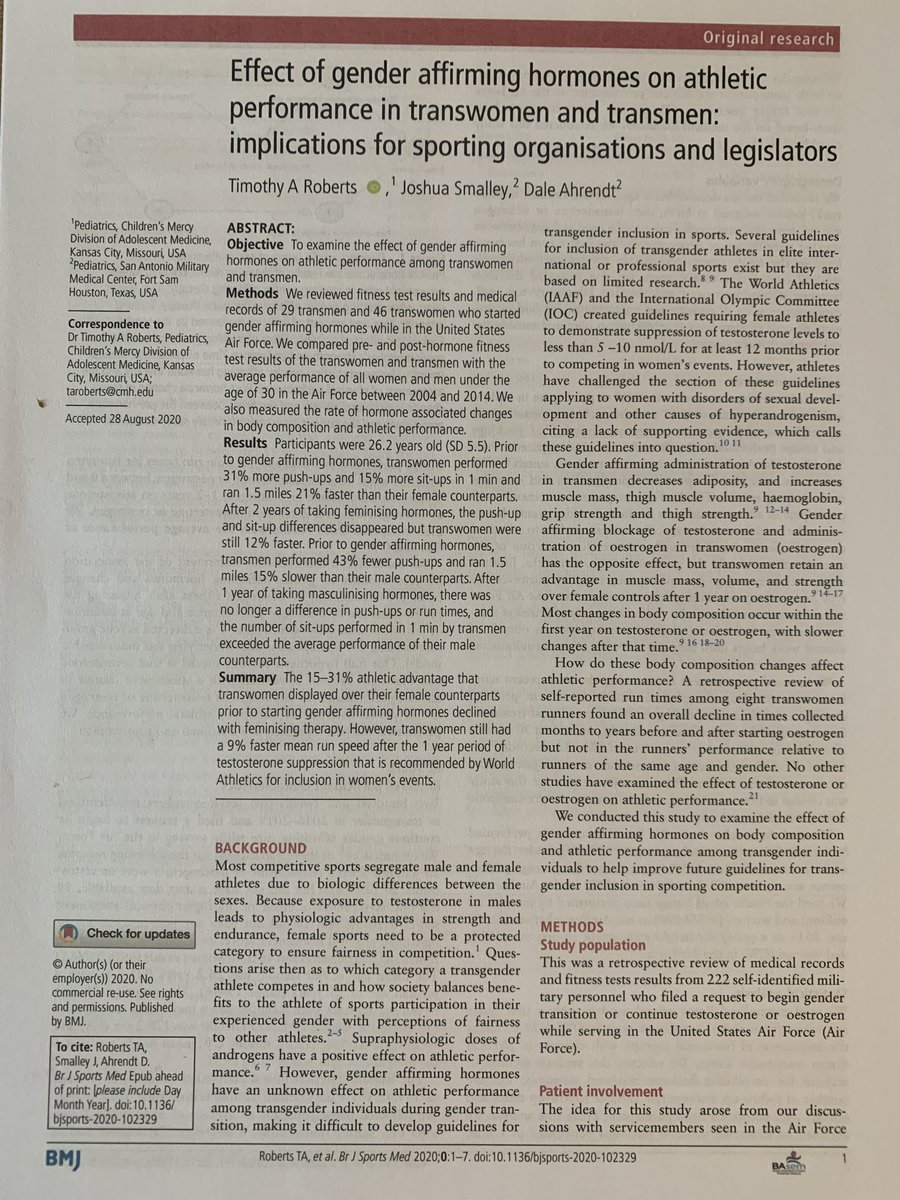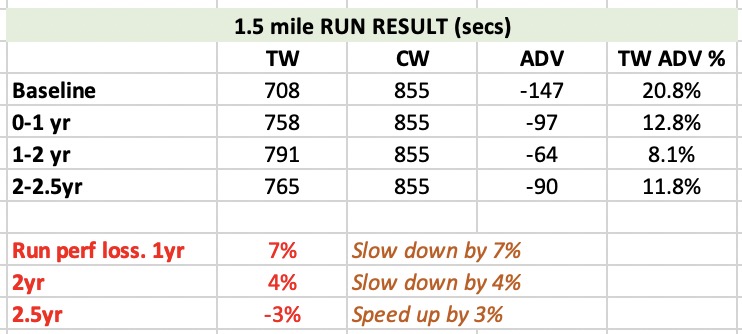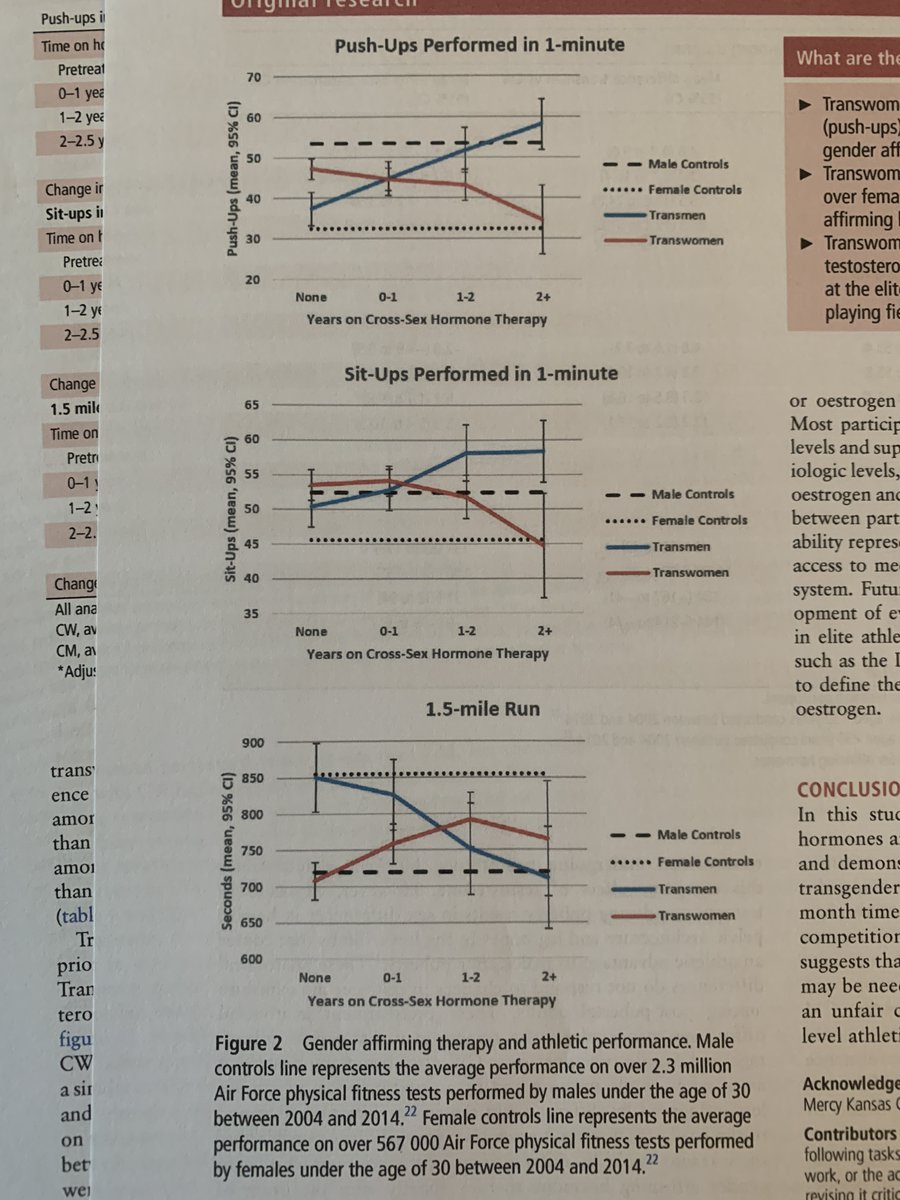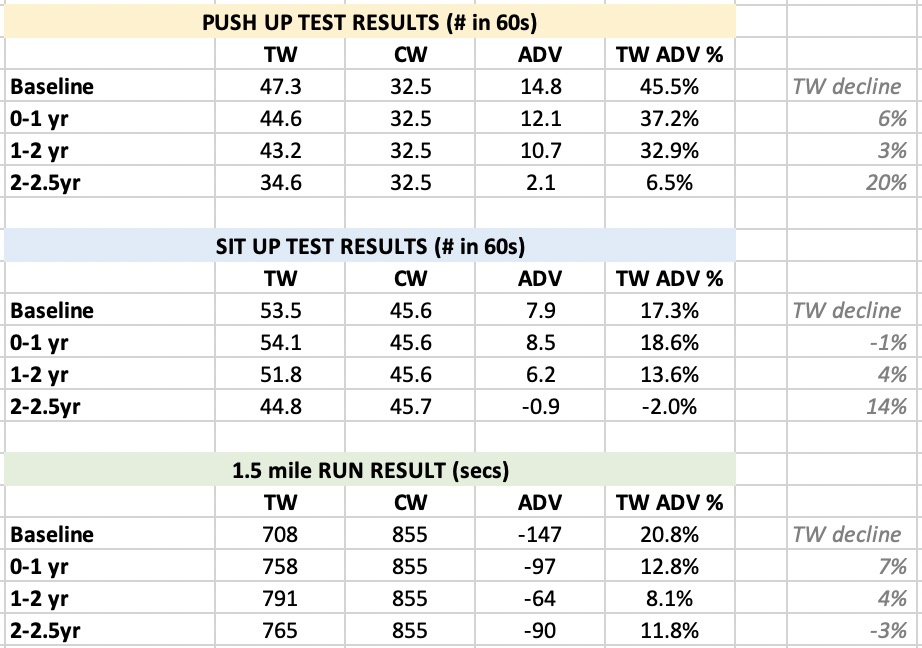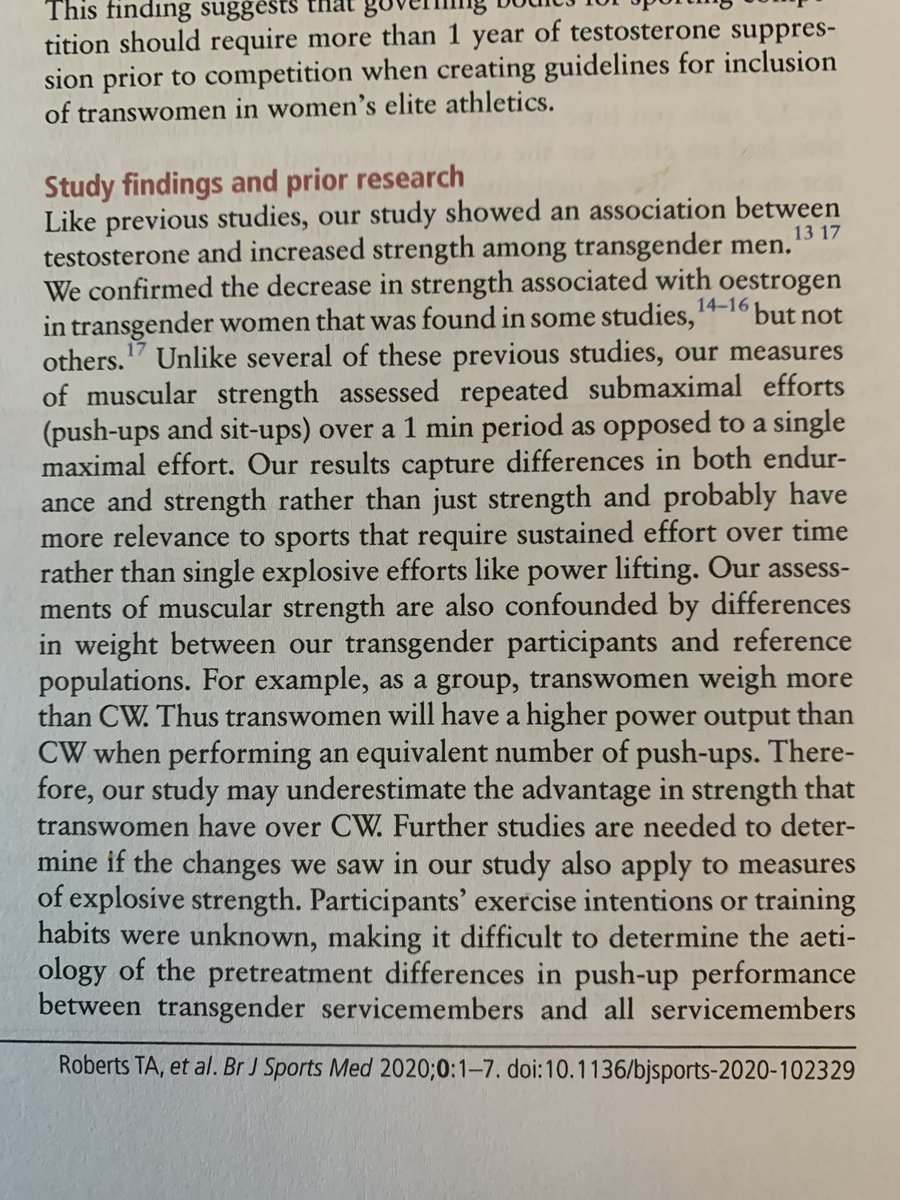New study on transgender & performance. The paper’s title could've been “Significant endurance & strength-endurance advantages are retained for up to 2 years despite T reduction in TW: Implications for the assumptions of fairness in current policies”. Some thoughts to follow
First, remind ourselves of the principle and why the results matter. Sports policies have allowed inclusion of TW who lower T for 12 months on the assumption that this removes the male physiological advantages sufficiently to create fairness when women’s sport is “opened” up (2/)
The obvious (though amazingly unasked) question is “Is there evidence showing that this actually works? In other words, does T suppression remove the biological advantages that necessitate a separate women’s category in sport?" This is the question the study is trying to address:
The study includes 46 trans women (TW) and 29 trans men, all in the Airforce. It capitalises on the practice of physical fitness assessments every 12 months to track how performance in push-up, sit-ups and 1.5 mile run changes when T is either reduced (TW) or increased (TM) (4/)
The TW and TM results are, correctly, compared to ciswomen and cismen, respectively. They have data for over 2 million CM and 500,000 CW for these comparisons. So it’s about tracking the changes in performance with T alteration AND comparisons to the appropriate group (5/)
The main finding is that 1.5 mile run performance in TW remains significantly faster than in CW even after three years of T reduction. It starts 21% faster, and then TW do slow down, but remain 12% faster than CW in the third year. So T reduction doesn’t remove male advantage
Push-up and sit-up performance remains significantly better in TW than CW into the second year. By the 3rd year it drops to CW levels (more on that shortly). At 12 months (as per policy), the TW advantage is 37%, 19% & 13% for the 3 tasks, respectively (7/)
This is not the first evidence of retained advantage. There are a dozen studies, measuring variables ranging from lean mass to strength in TW, all showing that T suppression causes very modest reductions. This adds to that, in a trained cohort in functional performance tasks (8/)
One thing that is important (& as yet unknown) is whether the ‘targets’ for TW and TM changed in line with their gender identity. That is, there are minimum fitness standards that must be met by service members, and I’m not sure if those are changed for TW between Year 0 and 3
The reason this matters is that if standards differ for men & women (anyone know this?), AND IF TW are evaluated against a lower standard after beginning reassignment, then their incentive to do X push-ups and & Y sit-ups is reduced by design, amplifying the noted decline (10/)
So when push-up scores drop by 6% in Yr 1, 3% in Yr 2, and 20% in Yr 3, and sit-ups go -1%, 4% and 14%, is it possible that the large drop at the end is the result of conscious “pacing”, target-hitting, or group compliance? That seems important, I don’t know the answer yet (11/)
The other point, made in the paper, is that for push-ups, a body weight exercise, the TW are heavier than CW, so when they do say 33% more push-ups in 1 minute (Yr 2), the power output difference is even greater than the number suggests. As noted in the discussion of the paper:
So the picture is: Running performance is modestly reduced, so more than half the male advantage is retained into a 3rd year. In strength-endurance tasks, TW significantly outperform CW for 2 years, probably longer in absolute terms. This supports evidence from lab-trials (13/)
My CONCLUSION, then, is that there remains ZERO good evidence that T suppression can ensure fairness (or safety). There is now plenty of evidence that a large proportion of male physiological attributes and therefore performance advantages persist despite T suppression (14/)
The notion (or hope) that fairness and inclusion can be ‘balanced’, which underpins many policies and is even shared by many scientists, is unsupported, and indeed refuted, by the evidence available to us. Given limitations, more studies are of course required.
Finally, this is the latest study (of 13, I count) showing pretty much the same thing. They have limitations, but they are consistent & solid. The first of them was by Gooren, and it concluded, astonishingly, that because T suppression caused some strength reductions, that...
…TW could compete fairly with women depending "on what degree of arbitrariness one wishes to accept”. In other words, fairness can be arbitrary for women’s sport. But even then, it was clear that retained advantages would undermine the meaning of the women’s category (16/)
Unless of course, decision makers & academics decide this fairness (& safety, in instances where physical risk is a factor) is secondary in importance. Which, coming full circle to this study, is what would be implied if the policies didn’t recognise this latest evidence (end)
We did a podcast on this recently. It precedes this study (though I knew this was coming), but it explains the other dozen studies, the concept of balancing imperatives & why WR reached a guideline that keeps women’s rugby closed based on evidence to date: https://podcasts.apple.com/za/podcast/why-rugbys-controversial-new-transgender-guidelines/id1461719225

 Read on Twitter
Read on Twitter
